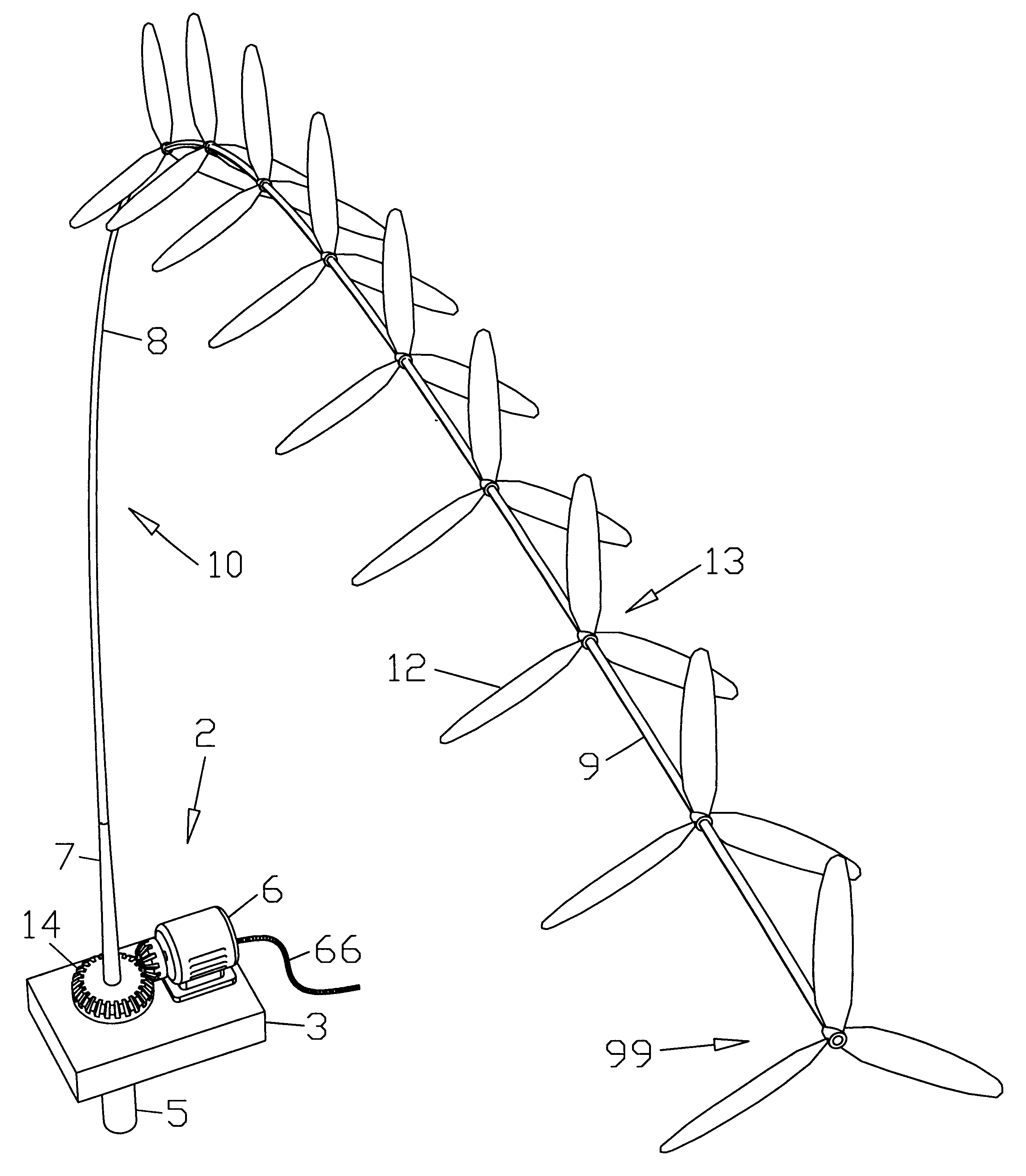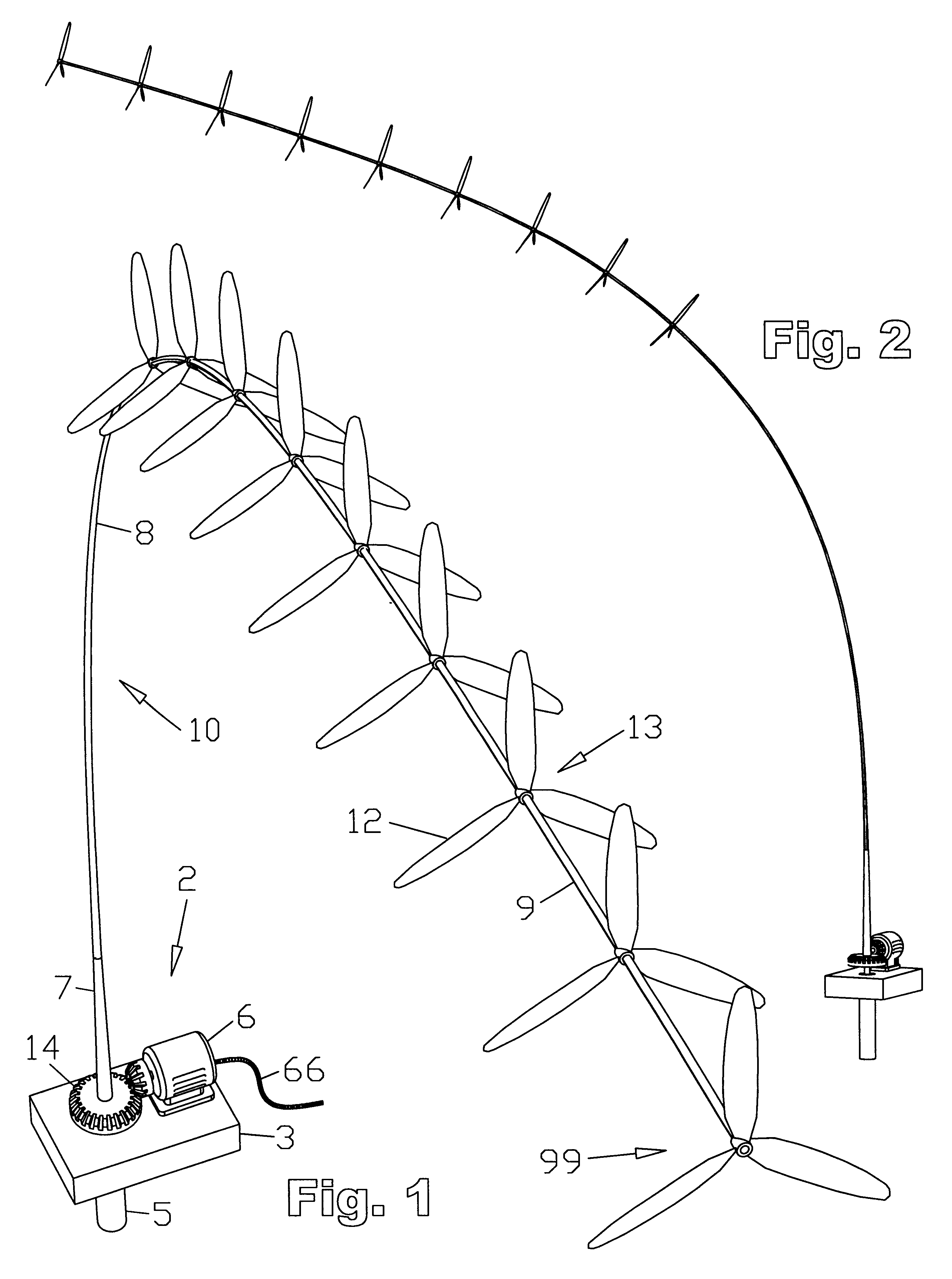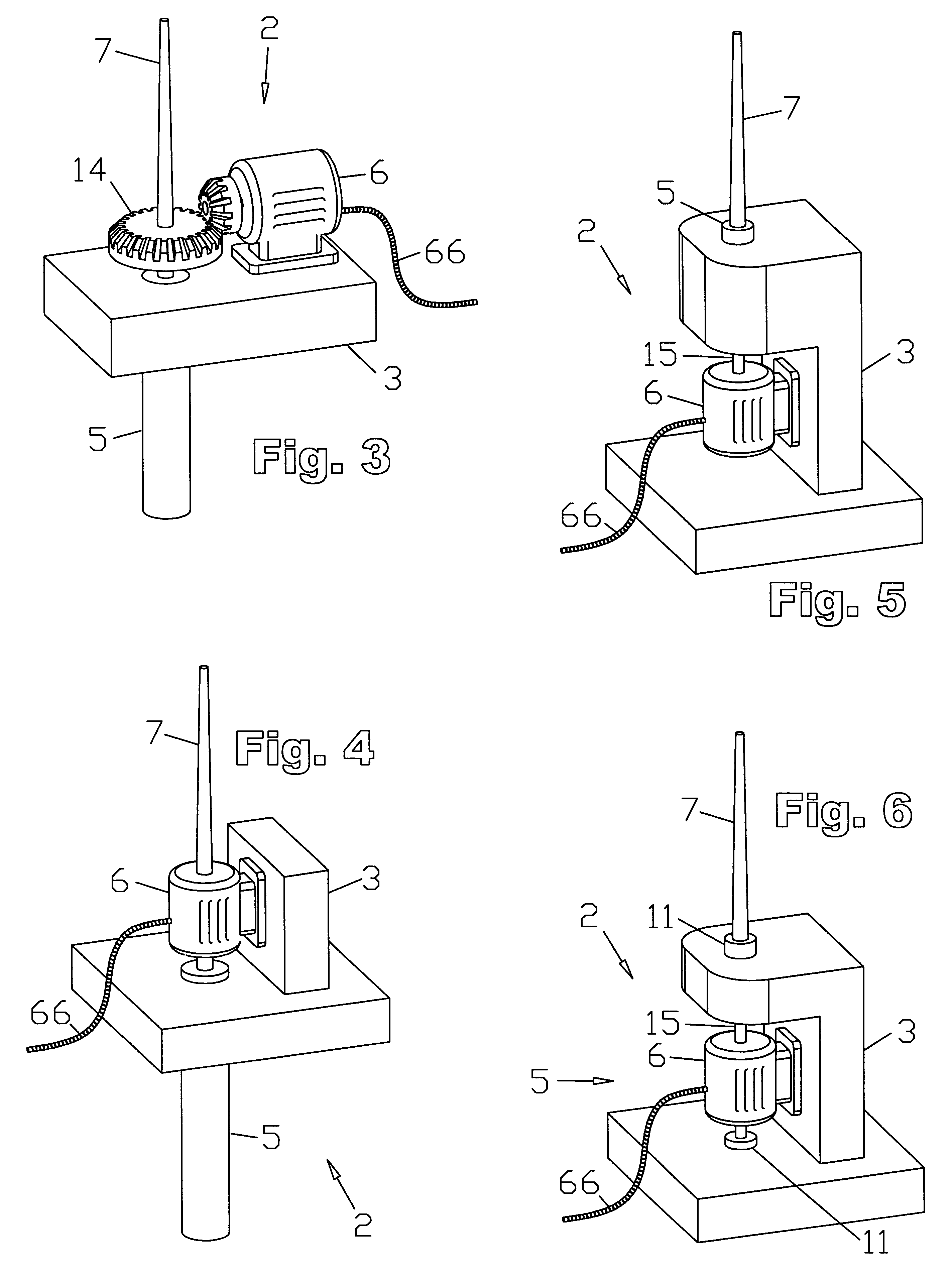Serpentine wind turbine
a wind turbine and serpentine technology, applied in the field of wind turbines, can solve the problems of inefficient, dangerous, and serious consideration of a flexible tower, and reducing the effective swept area
- Summary
- Abstract
- Description
- Claims
- Application Information
AI Technical Summary
Problems solved by technology
Method used
Image
Examples
first embodiment
1. In the first embodiment, referring to FIGS. 1, 2, and 3, a rotating tower / driveshaft 10 comprising a resilient elongate structure, such as a flexible pole, that serves as both a tower and a driveshaft, extends substantially upward from a base means 2 located substantially at surface level. The base means 2, comprises a mounting means 3, a cantilevered bearing means 5, a power takeoff means 14, and a load 6. A closer cutaway view of such a base 2, as in FIG. 78, shows that the cantilevered bearing means 5 may comprise, for example, a substantially vertical axle 15, rotationally supported by two rotational bearing means 11, said bearing means 11 being located substantially proximate either end of said axle 15. Radial loads on the bearings can be substantially reduced by making the shaft 15 as long as is practical, thereby separating these bearings as far apart as is practical, so as to enhance their effective, combined leverage. The bearings are securely retained by a bearing suppo...
fifth embodiment
6. FIG. 9 shows an alternative subsurface base means similar to that of the fifth embodiment, in FIG. 8, except that the load 6 is disposed between the two rotational bearing means 11, as opposed to below them, taking up less overall space while maintaining the distance between the bearings 11. This particular base configuration was chosen for the sake of example only, to illustrate the wide variety of types of bases possible, within the overall scope of the invention, and need not necessarily be specifically associated with any particular rotor configuration.
7. FIG. 11 presents an alternative rotor blade configuration: three-bladed horizontal axis type rotors 13, sequentially offset by 60 degrees. (Due to symmetry, it would be equally accurate to say that they simply alternate in direction, and are therefore offset by 180 degrees.) The key concept here is that the rotors need not be perfectly aligned from one to the next. The rotors may be originally mounted in this offset way, or ...
eighth embodiment
9. In FIG. 13, single-bladed rotors project from the shaft in a helical pattern, at increments of 60 degrees. Such a configuration may encourage the entire tower / driveshaft to spin in a helical mode. The effect at any one point, as in the eighth embodiment, is that the rotor sweeps an enlarged arc, encountering more wind. One or more regions of stability, or harmonic nodes, having a more balanced rotor configuration, such as that of FIG. 10, may be combined on the same tower / driveshaft with a configuration such as this. One can quickly see that a wide variety of rotor configurations, combinations, and permutations thereof, are possible, within the scope of the present invention.
10. FIGS. 14 and 15 show a floating marine installation. Here the mounting means 3 is buoyant, being less dense than water, and floats at the surface 1 of a body of water. The bearing support means 4, here comprising a rigid hollow tube, extends below the water surface, being held down by the weight of ballas...
PUM
 Login to View More
Login to View More Abstract
Description
Claims
Application Information
 Login to View More
Login to View More - R&D
- Intellectual Property
- Life Sciences
- Materials
- Tech Scout
- Unparalleled Data Quality
- Higher Quality Content
- 60% Fewer Hallucinations
Browse by: Latest US Patents, China's latest patents, Technical Efficacy Thesaurus, Application Domain, Technology Topic, Popular Technical Reports.
© 2025 PatSnap. All rights reserved.Legal|Privacy policy|Modern Slavery Act Transparency Statement|Sitemap|About US| Contact US: help@patsnap.com



